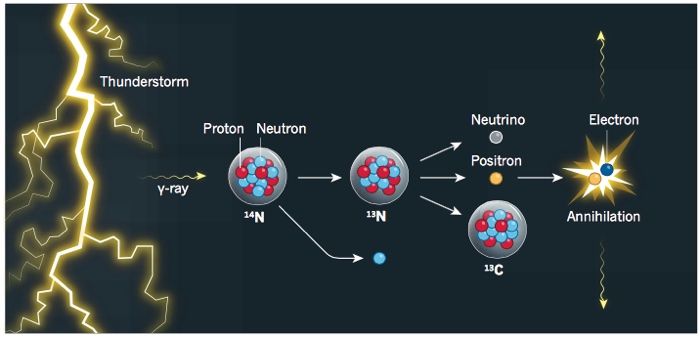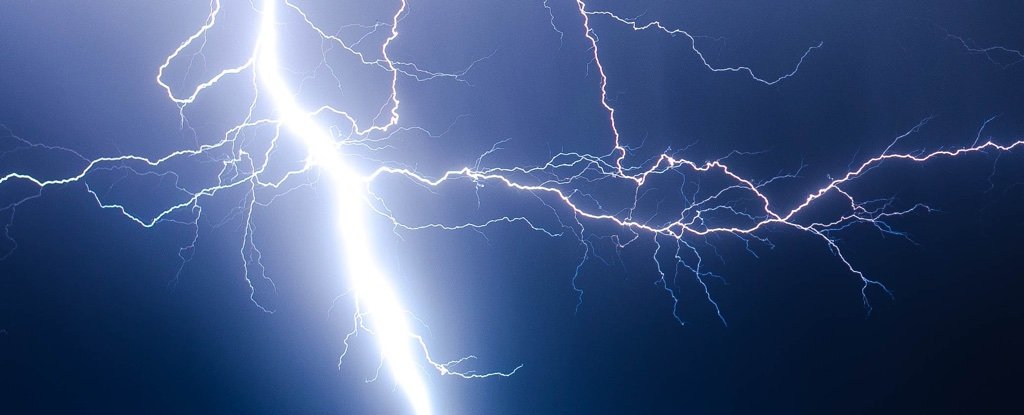A hypothesis dating back almost a century has just been confirmed for the first time-- scientists have finally witnessed lightning trigger nuclear reactions within our atmosphere. Such a hypothesis predicted that high-energy electrons found within lightning are capable of producing gamma rays that would induce nuclear reactions within the thundercloud.
In the midst of a thunderstorm that occurred in February of this year, the team had detected “intense radiation” and even a brief flash of gamma rays given off by bursts of lightning just off the coast. Immediately, a prolonged gamma ray line at an energy of 0.511 megaelectronvolts (MeV) was measured.
To add onto the interesting nature of thunderstorms-- the process that was observed by researchers also carries significance because this is the sole case where radioactive isotopes were observed to be naturally produced within the atmosphere.
Enoto confirms this: “this is still an open question. We have proved the existence of photonuclear reactions at least from one lightning discharge... in order to answer your question, we need more statistical and quantitative studies.
I am personally suspecting that the photonuclear reaction would happen at powerful events.”
http://www.physics-astronomy.com/2017/11/confirmed-thunderstorms-observed.html#.Whzrv2cvFyg
The one downside to such a phenomenon is that it hasn’t ever been definitively observed until now. Teruaki Enoto of Kyoto University, Japan, who is an astrophysicist, and one of the researchers in this study explained the following to ScienceAlert: “the photonuclear reaction in the atmosphere has been theoretically explained [to be] triggered by such high energy radiation. Several groups have accumulated signatures of this phenomena, such as signals of either neutrons or positrons, which are products of this reaction.”
Scientists have been detecting these signals dating all the way back to the 1980’s using ground-based observatories, satellites, and aircrafts but it was a tedious process to experimentally confirm whether or not nuclear reactions were yielding the neutrons, particles, or positrons observed.
However, in this study Enoto and his fellow researchers employed radiation detectors installed at the Kashiwazaki-Kariwa nuclear power station in Niigata, along the coast of the Sea of Japan, in their study. Clearly, this strategy proved useful.
This is exactly the energy signature to be expected from electrons and positrons following a nuclear reaction.
In a commentary on the study, experimental physicist Leonid Babich from the Russian Federal Nuclear Centre explained such an occurrence to Nature: “this line is a conclusive indication of electron-positron annihilation, and represents unequivocal evidence that photonuclear reactions can be triggered by thunderstorms.”
Enoto also confirms that the findings are indicative of more interesting occurrences in thunderstorms than we usually assume: “Usually people think lightning can interact with electrons in atoms. The photonuclear reactions indicate that lightning also interacts even with the nuclei if gamma rays have sufficiently high energy to knock out neutrons from the nuclei.”
The only other time this has been seen so far is in the generation of particles as a product of cosmic rays.
However, do not fear-- there is no reason for anyone to be concerned for the radioactive isotopes have a very limited life-span, are limited spatially, and do not carry a dangerous amount of radioactivity in comparison to the usual background radioactive environments. All together, this poses no health risk. If there is anything to be concerned about, it is as to whether thunderstorms are capable of kickstarting dangerous reactions because researchers do not have a definitive answer to that question.
I am personally suspecting that the photonuclear reaction would happen at powerful events.”
http://www.physics-astronomy.com/2017/11/confirmed-thunderstorms-observed.html#.Whzrv2cvFyg



No comments :
Post a Comment